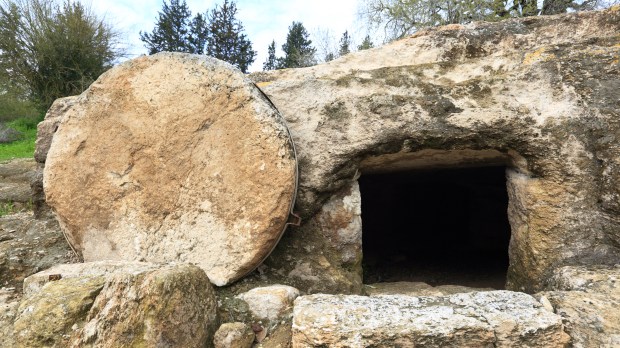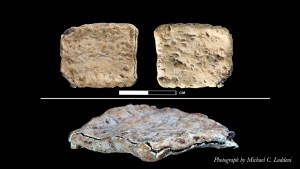An archaeological examination of the Gospel accounts of the sealing of Christ’s tomb is calling to question the shape of the rock used as the tomb’s seal. Popular artistic representations of Jesus’ tomb often feature a large disk-shaped stone that was rolled into place to block the entryway.A paper from Urban C. von Wahlde published by the Biblical Archaeology Society (BAS) in 2015, however, suggests that it may have been more of a square.
A matter of wealth
According to BAS, von Wahlde sifted through the records of some 900 Second Temple-era burial sites for his paper, “A Rolling Stone That Was Hard to Roll.” Of such a large sample size, only four sites were identified as having disk-shaped sealing stones. These belonged to some of the most wealthy and prominent people of their time.
Of course, we know that Jesus’ tomb was borrowed from Joseph of Arimathea, and was not designed for Christ. It is hard to say if Joseph was of high enough social status to have garnered a circular seal. Gospel records give differing descriptions of Joseph, with Matthew naming him as a “rich man” while Mark refers to him as a “respected member of the council.”
The BAS report found it unlikely that Joseph of Arimathea would have had a disk-shaped sealing stone ready for his tomb. This would mean the tomb would have been equipped with a square stone. For confirmation of this, von Wahlde began dissecting the ancient Greek script of the original Gospels. His primary concentration was on one word, the Greek kulio, meaning “to roll.”
Greek translations
Von Wahlde found that kulio was used to describe the placement of the seal in Matthew, Mark, and Luke (the Synoptic Gospels). John, however, used the Greek term hairo, which means “removed” or “taken away.” This term von Wahlde found much more reflective of the Jewish burial practices at the time, for which he praised John’s detailed account.
The author suggested that the use of kulio as a root was not as concerned with the rolling movement, but with the movement either towards or away from the tomb’s entryway. Von Wahlde wrote:
“It may very well be that people rolled the ‘cork-shaped’ stones away from the tomb. Once you see the size of a ‘stopper’ stone, it is easy to see that, however one gets the stone out of the doorway, chances are you are going to roll it the rest of the way.”
Von Wahlde concluded that the archaeological evidence concerning the prevalence of disk-shaped stones during Jesus’ time, as well as the Gospel accounts, suggest that the stone used to seal Christ’s tomb was more of a block than a disk. He noted that circular seals became more popular in the Late Roman and Byzantine eras.


